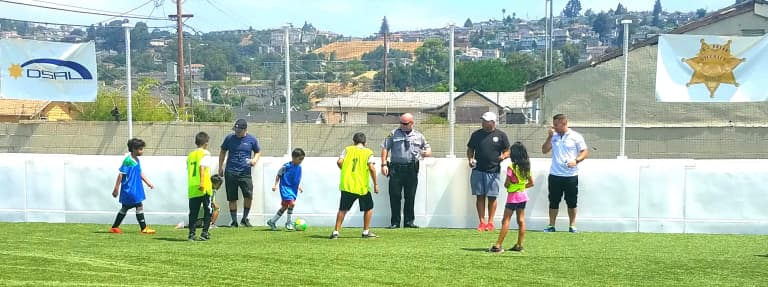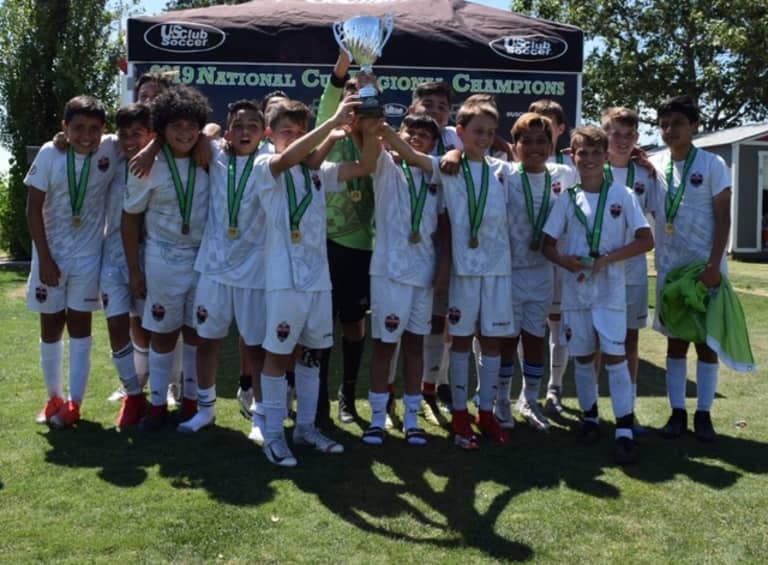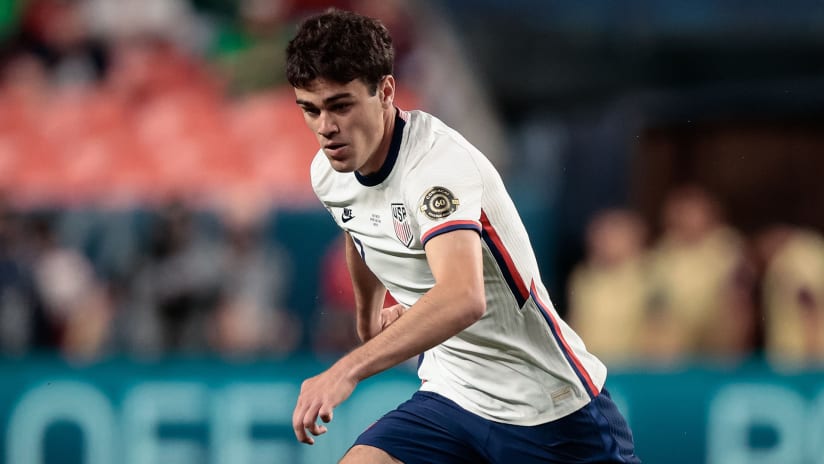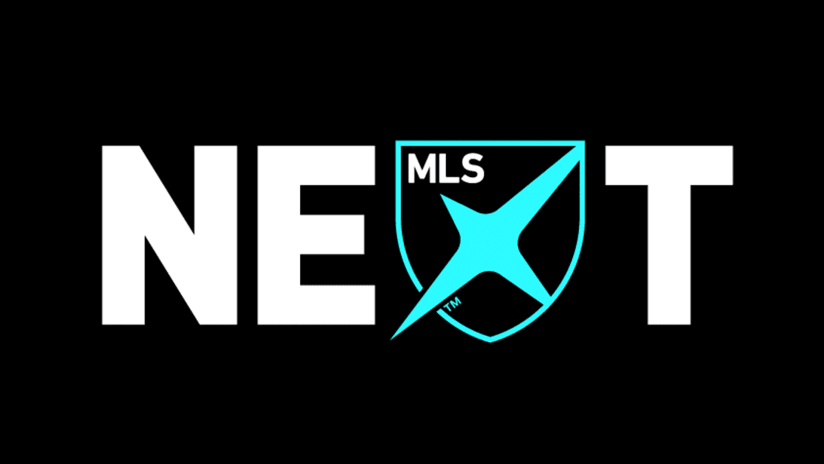Omar Cervantes was certain he was watching diamonds in the rough.
An A-licensed coach and director with experience at youth clubs across the Bay Area, Cervantes arrived at the DSAL soccer program in Ashland, California several years ago and was impressed with the talent he saw in the recreational league, a loosely-organized competition providing opportunities to play for more than 1,000 children per season, most of them from working-class environments in this unincorporated area of Alameda County plagued by poverty and the many ills that accompany it.
This isn’t your typical youth soccer organization. DSAL stands for Deputy Sheriff’s Activities League, a unique initiative of the county sheriff's department designed to address the root causes of crime with a broad spectrum of social programming and community outreach, from sports to art to economic development to agriculture and much more. Dubbed the “community capitals policing model,” it’s earned national attention for its innovative efforts to look beyond conventional law-and-order enforcement in an immigrant-rich, post-industrial, majority-minority corner of the Bay.
“There's a boxing gym; we hold Gold Glove events for the last three years. We have Zumba classes,” Cervantes explained to MLSsoccer.com over the weekend. “We have a drum line. We have a prison reentry program. We have an urban farm. The nonprofit is huge; we're like a little blip within it.”
Despite a lack of access to the coaching and facilities that those in wealthier areas enjoy, many of the kids he saw were ballers, immersed in the sport from an early age as members of ethnic communities where the game is an overriding passion. If they only had a chance to compete against the travel soccer teams up the road in places like Silicon Valley, he reckoned, they could hold their own and then some.
“From a talent perspective, it’s obviously because they’re playing. It wasn't like there's anything different in the water, it’s just culturally, it's what they're doing,” said Cervantes, whose teams often play at small-sided fields DSAL built themselves in an unused lot next to a liquor store. “The game’s over, they’re playing. Before the game, they’re playing, and their parents are watching it, etc. And it doesn't matter what nationality it is, if it’s a footballing country or culture, that's just how it is.”
He was right. Sheriffs FC, the competitive club launched out of the DSAL rec league just three years ago, are thriving – winning games and trophies with quality soccer, and changing lives for the better. Players are required to maintain good grades in school and do volunteer work in their community. Cervantes admits now that he pushed the envelope in launching the program, but the positive results both on the field and off have impressed the sheriff's department and led to further grants and donations.
Which is critically important, because like its recreational counterpart, Sheriffs FC costs nothing to those who participate.
“There are creative ways to figure out manners kids can play for free or for low cost, even. There’s a cost associated with everything,” said Cervantes, who last year won the Positive Coaching Alliance’s National Double-Goal Coach Award. “It's not free. It's free to our families. The funding is coming from the corrections department or the sheriff's office or grants because of the work we're doing.”
Last month another breakthrough arrived, as Sheriffs FC were invited to join MLS’s new elite youth development platform in its first wave of expansion, where they will compete in the Under-13 and U-14 age groups, providing another platform for their kids to test themselves, and maybe improve their lives along the way. Despite fielding only about a dozen teams with some 170 players – small potatoes in the multi-billion-dollar industry of North American youth soccer – the little club from one of the Bay’s most marginalized areas is now part of what’s expected to be the top competition in the country.
“Obviously, we know they're not going to go pro, all of them,” said Cervantes. “But there are kids here that are going to play professional soccer, I promise you that. And if it's one or two and we have a hand in that, and it helps boost the image of the community, those kids come back and give back, then our job’s done. And then on the other 166, can we help them be better people, give them resources to succeed in school? It’s a win-win.”

Sheriffs FC is not just aiming to develop players, but responsible community members as well. | Courtesy of Sheriffs FC
A comparable story is unfolding about 60 miles north in Wine Country, where Napa United, who were also welcomed into MLS’s new league to compete in its younger age groups, work with a local population that ranges to both extremes on the economic spectrum, from some of California’s richest people to those who labor in the region’s famous vineyards.
“On one side of our main highway, we've got huge wealth, then on the other side of it, we've got [communities] almost below the poverty line,” explains academy director Gavin Taylor, a former academy coach and talent scout for English side Fulham FC.
“The community is almost 50/50 between huge wealth and then the more blue-collar working class and Latino families, and I think we've done a good job of bringing that together. I think sport does that in general, and soccer is a great unifier of that.”
Partnering with local NPSL (fourth-tier semi-professional) club Napa Valley 1839 FC, Napa United keep their player dues as low as possible — Taylor estimates they’re half what some other Northern California youth clubs charge — and rely on donors, fundraisers and other revenue sources to fund need-based scholarships. And the club has come to fill a key place not only in the socio-economic landscape, but in geographical terms, spanning the gap between the Bay to the south and Sacramento to the east.
“It's actually a pretty good central hub for players to travel into,” said Taylor. “If you talk about traffic patterns, to get to any of our major [professional] clubs, to get to Sac or to San Jose, is anywhere from a two- to four-hour each-way journey for most of the players in the Bay Area. So we sit in a different market — traveling into Napa is easier than traveling out of Napa. So I think we'll pick up a lot of high-level players from the surrounding areas.”
Taylor compares the passion for, and knowledge of, the game among Napa’s Latino families to the working-class communities in London he once scouted for Fulham. Several of their players have earned opportunities to join MLS academies in Los Angeles and San Jose in recent years, and Taylor believes that’s just the tip of the iceberg.
“Listen, I have a huge belief on this one: The talent here up to 12, 13 years of age is no less than anywhere I've seen in Europe – and I've been blessed to kind of go all over Europe with our teams and tournaments,” he said. “So the talent is absolutely akin to what we have in England, what there is in Spain, what there is in Germany. It's [that] the pathway doesn't exist. And then the people making decisions on who gets to the next level, I don't think they truly have the experience to make that call.
“Parents are asking people for directions about what their kids should do, from coaches and technical directors and directors of coaching [who] don't know that journey. They haven't seen a player go from from 5, 6, 7, 8 years of age all the way through to the first team.”

Napa United have found success bringing together players of diverse backgrounds in one of the country's wealthiest regions. | Courtesy of Napa United
Both Taylor and Cervantes speak positively of the work of Fred Lipka and Gordon Bengtson, MLS’s point people on the new youth league, and see the potential for real progress away from the cutthroat, backbiting norms of competitive youth soccer in the US.
“If people really work together a little better, I truly feel like — for the kids’ sake — the kids would benefit. But it's always ‘my fiefdom, my kingdom, my title, my status, my club,’” said Cervantes.
“We're in it for the kids, and this gives them another platform. And I'm very happy with the way that Fred and Gordon have outlined the league structure and the importance of having competitive groups that are working together to help find the best players.”
Both Napa United and Sheriffs FC emphasize quality over quantity and are optimistic that this mentality is shared by many involved in the new league, where the hope — depending on the circumstances imposed by the COVID-19 pandemic — is to get teams back on the field for match play this fall.
“I'm actually super excited from the conversations that I've had with Fred and Gordon and those guys,” said Taylor. “These people really seem like they've got a true north on what we need to do to develop players, and just by the fact of the teams that I see that they've selected, it shows that they're not just going for the biggest clubs, who've maybe got a player membership of 5,000 players. They're going for the ones we've got a true commitment to player development.
“That's one of the issues we face: where all of the DOCs [directors of coaching] are building businesses, you end up getting in competition with each other. It's interesting — Napa’s got 600 wineries and they're not trying to do each other out of business, because they know that if they all work together, the business comes. And I think sport needs to be like that. I think we need to have that togetherness.”













